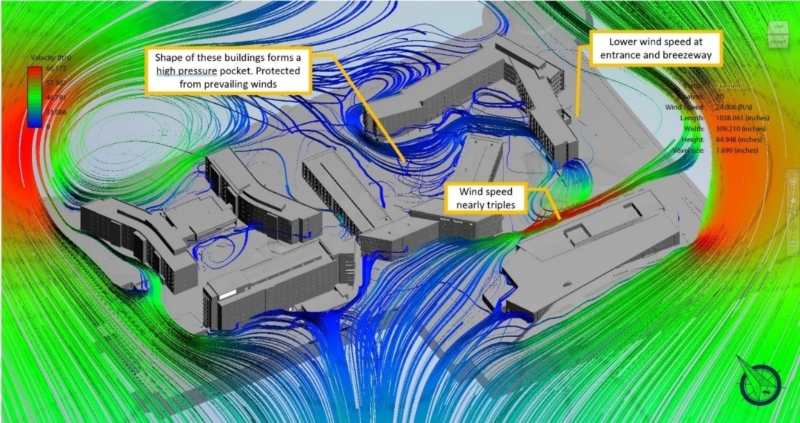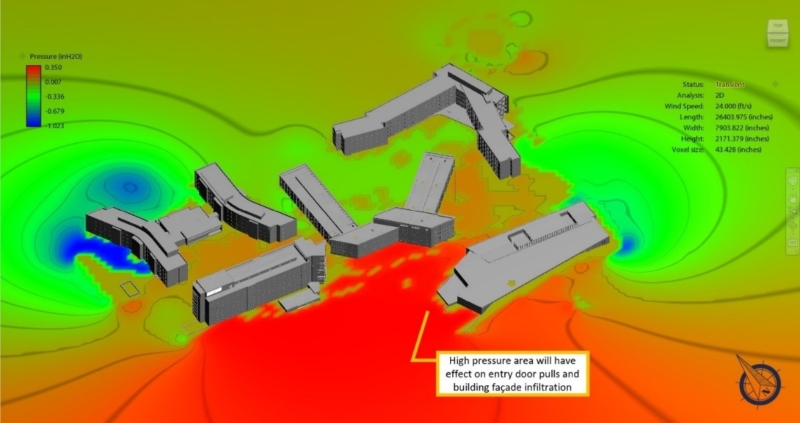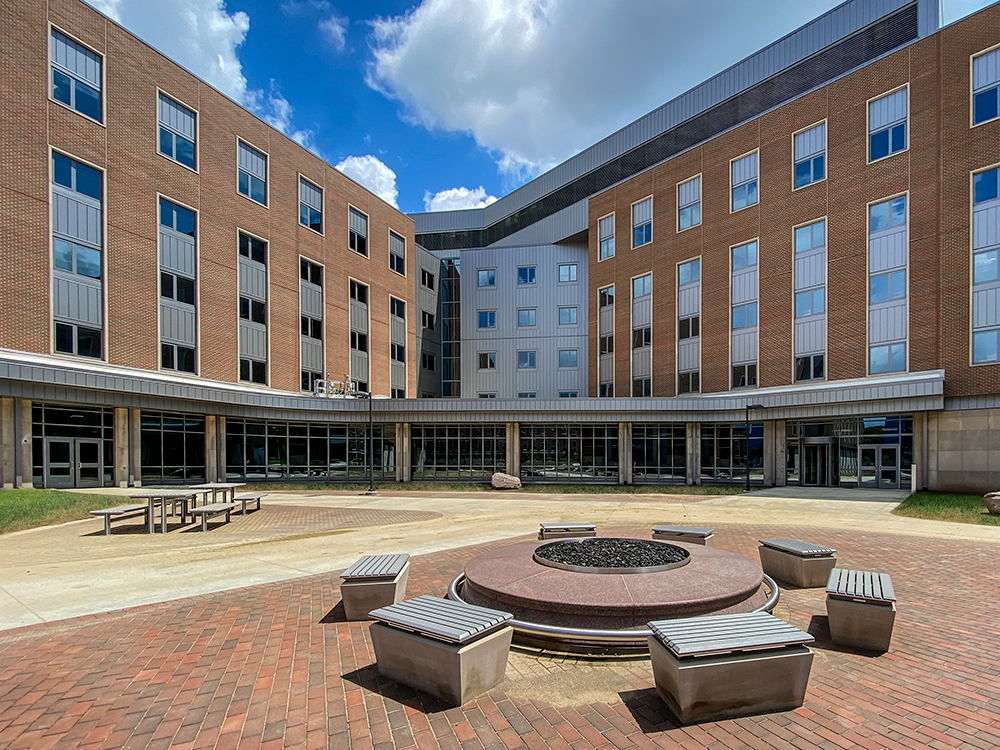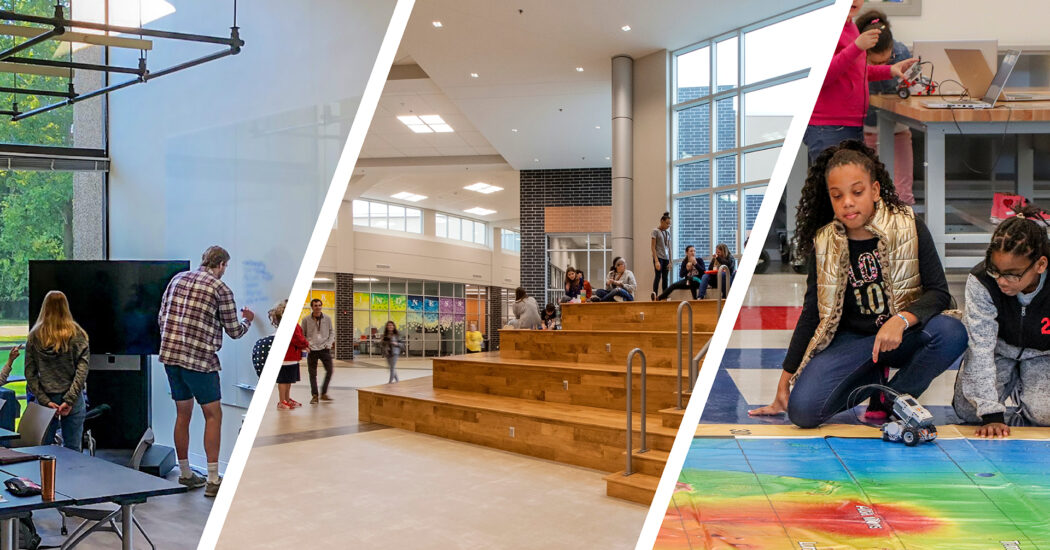How a Wind Study Informs Building Design
-
Category
Studio-Higher Ed, Innovation -
Posted By
Eric Broemel -
Posted On
Sep 30, 2020
A wind study is an engineering tool we can use to help clients make informed design decisions. It’s not a primary component of most projects and is not done for every building design, but when it is needed, the results can make a significant impact on the daily experience users have with a building or set of buildings.
We conducted two wind studies throughout the creation of the North Residential Neighborhood on Ball State University’s campus, which is comprised of three residence halls (North Hall, Schmidt/Wilson, and Botsford/Swinford), a dining hall, and a fourth residence hall currently under construction. These studies provide a good example of why and how we conduct wind studies, and what the results can tell us.
What is a wind study?
A wind study utilizes weather and location data to evaluate the patterns of air movement and pressure in and around a particular space at certain times of year.
Why do we conduct wind studies?
For commercial engineering and architectural purposes, wind studies are typically helpful in three primary scenarios:
- Identifying the impact wind will have on a building or cluster of buildings and their users, including the risk for wind tunnels
- Determining how exhaust from one building (such as an industrial building or science lab) may travel and impact surrounding areas or buildings
- Feasibility of using wind as an alternative energy source for a building
This information informs specific architectural and engineering design decisions that can create a better experience for building users and make the building more functional and durable.
Why did we conduct a wind study on Ball State’s campus?
In the case of the North Residential Neighborhood on Ball State’s campus, there were several low-rise buildings planned in close proximity in one area of campus. The university had previously experienced issues with a wind tunnel created by the Lafollette Complex, a 1960s-era multi-building residential complex just south of the North Residential Neighborhood (it is in the process of being demolished).
The effects of wind are a particular concern on college campuses for several reasons:
- College campuses are comprised of many types of buildings in close proximity
- Campuses have heavy pedestrian traffic, as students are frequently in and out of buildings to attend class and utilize campus amenities in all weather conditions
- Winter and spring, which typically have the highest wind speeds of all seasons, are peak usage times for a college campus; the impacts of wind are also exacerbated by cold Indiana winter temperatures
How is a wind study conducted?
We utilize weather condition and wind rose data from local weather stations, as well as a mapping software to visualize wind speed and pressure. This allows us to identify areas of concern or opportunity. The wind speed and pressure maps for the winter season below highlight some of those observations.

Winter wind speed map – North Residential Neighborhood


Winter wind pressure map – North Residential Neighborhood
How do the results inform design?
Wind patterns can inform a variety of elements in the exterior design of a building—from the shape of the building down to the type of door hardware.
For buildings in the North Residential Neighborhood, these wind studies informed:
- Size of the breezeway under the south wing of North Hall
- Placement of entryways on the east and west sides of North Hall
- Size of the east addition to Schmidt/Wilson Hall and its distance from Botsford/Swinford Hall


North Hall Fire Pit and Courtyard Entrance







